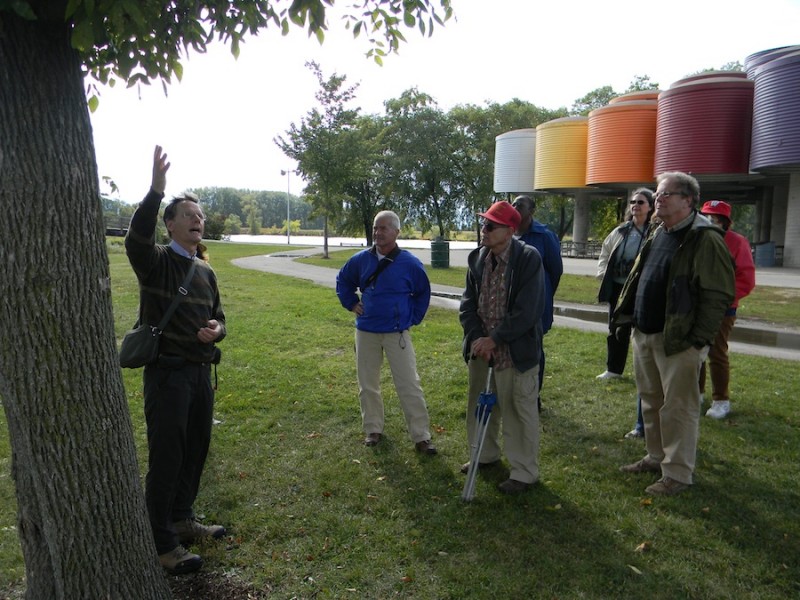
Dr. Bruce Allison led a tree walk through Warner Park on Sept. 25, describing and diagnosing its great trees.
First stop was an ash, healthy so far, but threatened by the emerald ash borer. Huge numbers of ash could be lost in Madison.
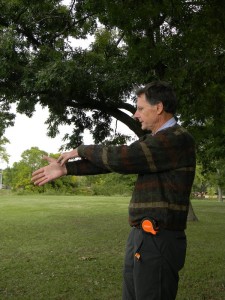
Allison explained the physics of trees: how roots grow 90 degrees to the trunk, and how bent trees compensate with larger roots on the opposite side of the lean. Long overhanging branches also grow like “I-beams” with extra wood fiber on top and bottom to support the weight.
Allison, a professional arborist, specializes in non-invasive analysis of trees. He demonstrated with an electronic tool how, by measuring the speed of a hammer tap, he can determine the inner health of a tree.
Stopping at a bur oak with a spreading base, Bruce’s taping showed that the tree had internal rot, or softening. Such analysis, sparing the tree the trauma of a boring tool, can help tree managers take down trees before they become liabilities.
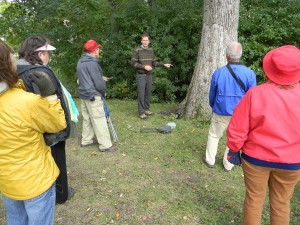
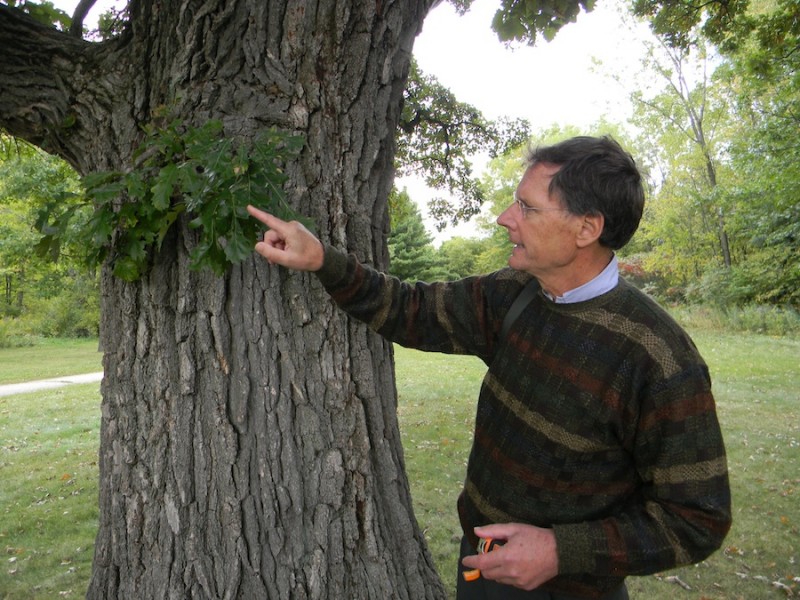
A simple measurement of this bur oak, using a tape measure, determined that the tree is 250 years old. The Park Department has agreed to stop mowing under the tree. Allison said a good mulch would help, along with a water soak before freezing weather. This would loosen soil that has been compacted by heavy mowers, making room for healthy root growth.
Later in the week, on WORT-FM’s Perpetual Notion Machine, Allison discussed Joyce Kilmer’s famous poem, Trees, and Kilmer’s Wisconsin connection. Before World War I, he visited Wisconsin, and said he hoped to return to teach at a Catholic college. He was killed in the war.
The program focused on the many ways in which trees reduce pollution, global warming and noise, and enhance property values, business and healing. Madison falls short of the 40 percent tree canopy recommended by urban foresters.
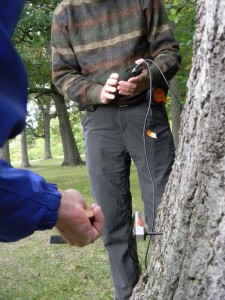
You must be logged in to post a comment.